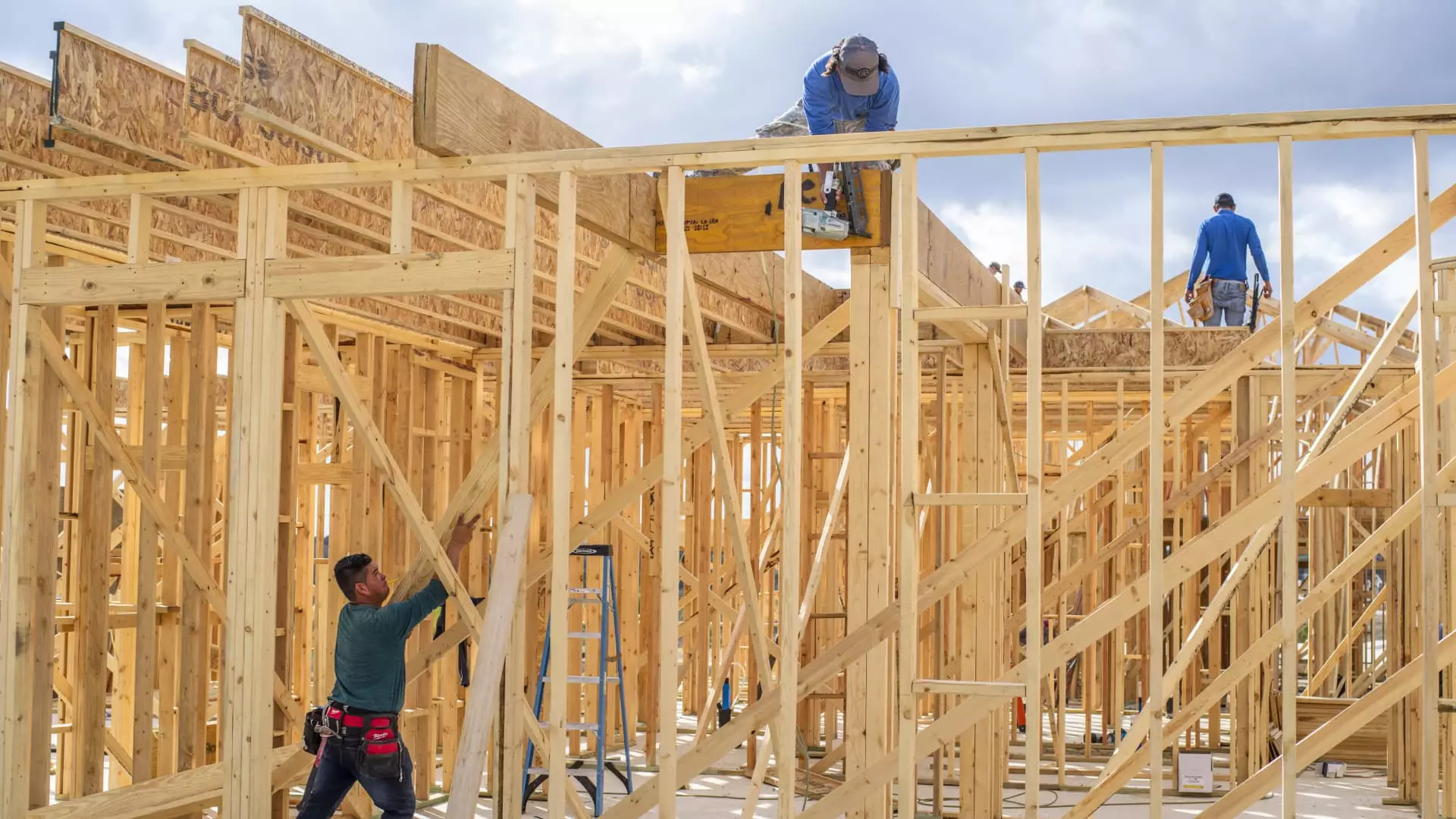In February, sentiment among single-family homebuilders in the United States experienced a significant decline, marking the lowest level observed in five months. According to the Housing Market Index (HMI) released by the National Association of Home Builders (NAHB), the index dropped sharply by five points, settling at 42. This value is critically significant, as it falls below the neutral threshold of 50, indicating a more general negativity in the outlook of builders compared to the previous year, where the index recorded a higher value of 48. Such sentiments reflect deeper concerns within the industry, primarily driven by rising costs and regulatory uncertainties that have left builders apprehensive about the future.
Impact of Tariffs and Cost Concerns
One of the principal factors contributing to this decline is rising costs due to impending tariffs. Builders are particularly worried about President Trump’s tariffs that would affect materials sourced from Canada and Mexico, with original proposals for implementation experiencing delays. Despite these delays, the anticipated financial burden remains a stressor for builders who depend heavily on international trade; about 32% of appliances and 30% of softwood lumber used in construction stem from these regions. This impending cost increase stirs anxiety among builders, affecting their ability to maintain price competitiveness in an already strained market.
NAHB Chairman Carl Harris expressed a lingering desire for pro-development policies, especially concerning regulatory reform. However, he highlighted that the current landscape, rife with uncertainties, has forced a reassessment of projections for 2025 and beyond. The sharp drop in builder confidence reflects these economic realities, as builders are increasingly cautious about moving forward amid unpredictability.
The Cold Reality of Current Market Conditions
The ramifications of this sentiment dip are apparent across the entire housing market. In particular, the metrics of buyer traffic and current sales conditions have taken a nosedive, with buyer interest falling to just 29 on the index. The sales expectations for the next six months nosedived by an astounding 13 points, indicating builders anticipate challenging market conditions ahead. This negative sentiment arrives against a backdrop of already elevated mortgage rates, which have been hovering above the critical 7% mark in early 2024, further complicating the affordability situation for potential homebuyers. Higher home prices have only exacerbated these challenges, putting the dream of homeownership out of reach for many.
Moreover, the impact of increased borrowing costs becomes evident as families grapple for affordability. As mortgage rates remain elevated, many potential buyers find themselves priced out of the market, leading to a pronounced decline in demand. Industry experts, including Ryan Marshall, CEO of PulteGroup, noted a direct correlation between high mortgage rates and weakened buyer demand, with many prospective homeowners delaying purchases due to financial constraints.
The cycle of low buyer confidence further compounds the issue, leading to fewer home starts. This diminishes the overall housing supply right as the spring market approaches—a typically lucrative period for home sales. Builders are left in a precarious position, grappling with inflated material costs while striving to stimulate demand in a market characterized by affordability challenges.
Amid this turbulence, builders are reevaluating traditional sales incentives. According to the NAHB, the percentage of builders reducing prices has decreased from 30% in January to 26% in February, indicating a diminishing reliance on incentives to spur demand. As the reality sets in that many buyers are increasingly unable to participate in the market regardless of incentives, builders are finding their promotional strategies less impactful.
This evolving landscape requires a recalibration of tactics. The homebuilding industry must navigate these turbulent waters by not only emphasizing construction but also addressing the core factors that inhibit buyer capabilities—namely affordability and market fluidity.
Overall, the decline in homebuilder sentiment serves as a critical barometer for the housing market, highlighting a landscape punctuated by rising costs and declining buyer interest. The convergence of external economic factors, regulatory concerns, and internal market dynamics has left homebuilders vacillating between hope for recovery and dread of continuing challenges. Moving forward, it remains vital for industry stakeholders to adapt to these changes swiftly, seeking innovative solutions that cater to both builders’ needs and potential homebuyers’ financial realities. Only by finding common ground can the industry hope to stabilize and encourage growth in a recovering market.

